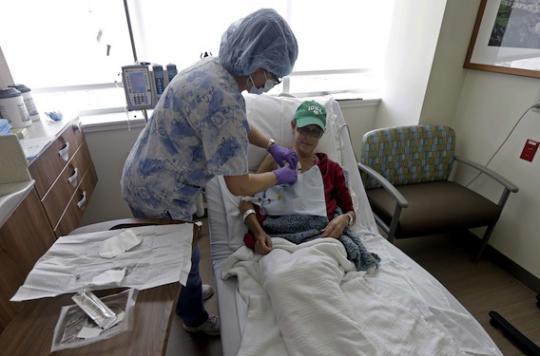A report estimates the number of new cancer cases in mainland France at 385,000 for 2015. With an increase in female cancers.

For 2015, a French study (1) estimated the number of new cancer cases in mainland France at 385,000. These projections (2) carried out by the network of cancer registers Francim, the biostatistics service of the Hospices Civils de Lyon (HCL), theHealth watch institute (InVS) andNational Cancer Institute (INCa) indicate that nearly 57% will be in men, or about 211,000 cases against 174,000 cases for women.
Increasing figures “taking into account demographic changes (growth and aging of the population)”, logically explain these scientists.
The most common prostate cancers
In terms of pathologies, new cases of cancer in humans would remain predominantly represented by prostate cancer, “even if it was not possible to make a projection for this cancer (53,400 cases estimated in 2011) », Specify the authors of the work. Lung cancer would remain the second most frequent cancer, with around 30,400 new cases, ahead of colon-rectal cancer (around 23,500 new cases).
In women, breast cancer, with around 54,000 new cases, remains by far the most frequent, ahead of colon-rectal cancer (19,500 new cases) and lung (14,800 new cases).
Soon 150,000 cancer deaths each year
The estimated number of cancer deaths is just under 150,000, of which 56% in men (84,000 deaths) and 44% in women (65,000 deaths).
The cancers responsible for the greatest number of deaths in humans would remain cancers of the lung (21,000 deaths), colon-rectum (9,300 deaths) and prostate (8,700 deaths).
In women, breast cancer is also believed to be the cause of the greatest number of deaths, with around 11,900 deaths, followed by lung cancer (9,600 deaths), and colon-rectal cancer (8,500 death).
A decrease in mortality for both sexes
In conclusion, the researchers write that the hypotheses adopted for the 19 solid tumor locations make it possible to predict for all cancers “a stabilization of the incidence rate of cancers (all types combined) in humans; an increase in this rate in women; and a decrease in the death rate for both sexes ”.
Finally, it can be noted that a Health Insurance report recently showed that occupational cancers increased by more than 10% in 2014, compared to the previous year.
(1) These 2015 projections were produced, for 19 solid tumor locations, from incidence data observed up to 2011 in the departments covered by a register of the Francim network as well as mortality data from the Epidemiology Center on medical causes of death (CépiDc). For each cancerous location, evolution hypotheses have been defined, for the period 2011-2015
(2) These projections should not be interpreted as an observed reality: they are only the reflection of the assumptions used and cannot, therefore, be used to reconstruct temporal trends. Only the estimation work carried out every 5 years allows this.
.















